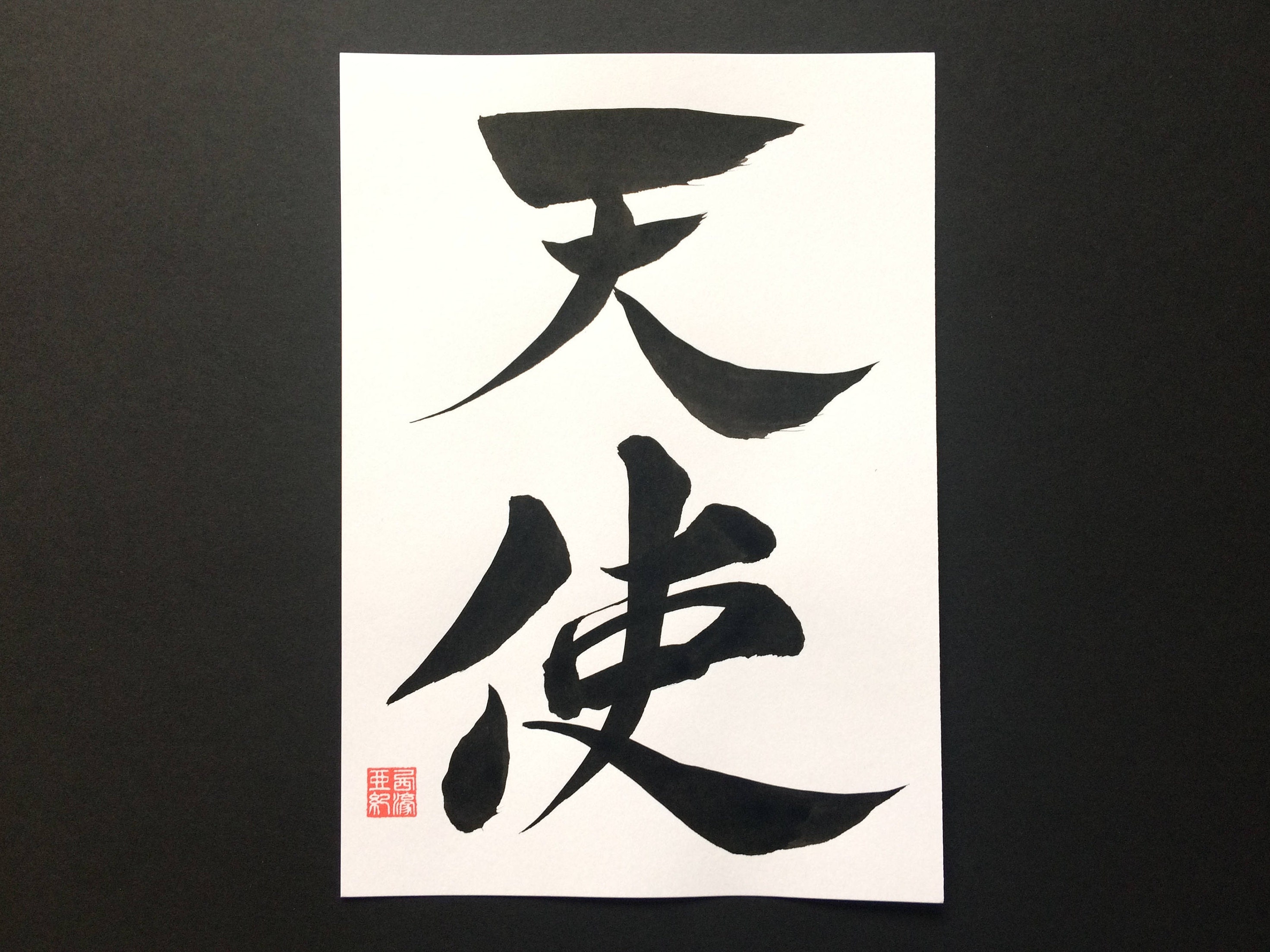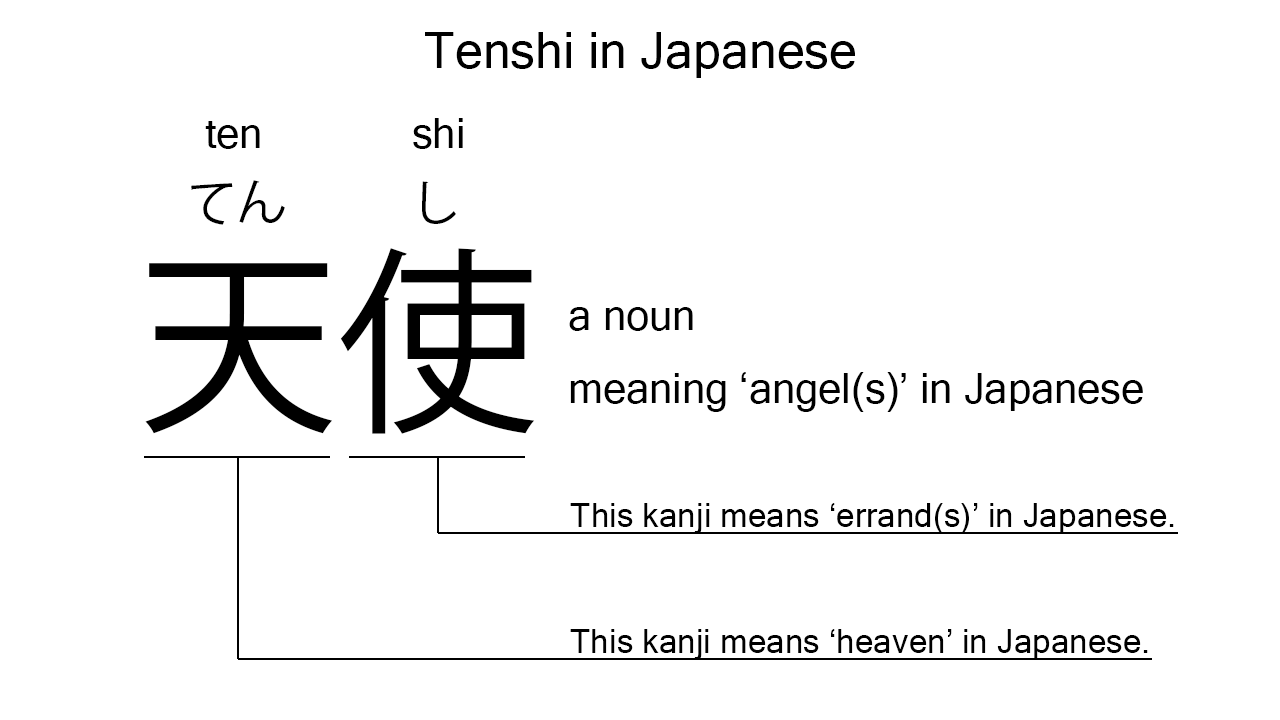Angel in japanese language – Embark on a captivating journey into the realm of “angel” in Japanese language. From its intricate characters to its profound cultural significance, this exploration delves into the nuances of this celestial concept, revealing its multifaceted nature and the captivating role it plays in Japanese society.
Unravel the etymology of the characters, decipher the enigmatic kanji combinations, and delve into the rich meanings and diverse usage of “angel” in Japanese. Discover how this term transcends religious boundaries, embodying cultural values and inspiring artistic expressions.
Japanese Characters
The Japanese word for “angel” is 天使 (tenshi). It is pronounced “ten-shi” and consists of two kanji characters: 天 (ten), meaning “heaven,” and 使 (shi), meaning “messenger.”
Etymology and Origins
The word “tenshi” is derived from the Chinese word 天使 (tiānshǐ), which in turn is derived from the Greek word ἄγγελος (angelos), meaning “messenger.”
Kanji Combinations
In Japanese, there are several ways to write “angel” using kanji combinations. Each combination carries its own nuances and conveys different aspects of the concept.
音読み Combination
The most common way to write “angel” in Japanese is using the kanji 天使 (てんし). This combination consists of the kanji 天 (ten), meaning “heaven,” and 使 (shi), meaning “messenger.” Together, they convey the idea of a heavenly messenger or an angel.
訓読み Combination
Another way to write “angel” in Japanese is using the kanji 守護霊 (しゅごれい). This combination consists of the kanji 守護 (shugo), meaning “protection,” and 霊 (rei), meaning “spirit.” Together, they convey the idea of a protective spirit or an angel.
当て字 Combination
In addition to the above combinations, there is also an ateji (当て字) combination used to write “angel.” This combination is エンジェル (enjeru), which is a direct transliteration of the English word “angel” into Japanese.
Meaning and Usage
In Japanese, the word “angel” is typically translated as “tenshi” (天使). It carries a similar meaning to its English counterpart, referring to a celestial being associated with goodness, purity, and divine intervention.
Cultural and Religious Connotations
In Japanese culture, angels are often depicted in a similar manner to Western depictions, with wings, halos, and flowing robes. However, they also have unique cultural associations. For instance, in Shintoism, angels are sometimes seen as guardians of nature and spirits, while in Buddhism, they are considered protectors and guides on the path to enlightenment.
Related Vocabulary

In addition to the core vocabulary terms for “angel” in Japanese, several related terms are frequently used in religious and cultural contexts.
These terms encompass concepts associated with the celestial realm, angelic attributes, and their interactions with the mortal world.
Heaven
The Japanese term for “heaven” is tengoku(天国), which literally translates to “heavenly kingdom.”
In Japanese mythology and religious beliefs, tengokuis often depicted as a celestial paradise inhabited by deities, angels, and the spirits of the virtuous.
Wings
Angels are often depicted with wings, and the Japanese term for “wings” is tsubasa(翼).
Tsubasarefers to the feathered appendages that enable birds and other creatures to fly, and it is also used metaphorically to represent the power of flight and the ability to soar above earthly constraints.
Halo
A halo is a luminous circle or aura often associated with divine or angelic figures, and the Japanese term for “halo” is nimbus(ニンバス).
Nimbusis derived from the Latin word “nimbus,” which means “cloud,” and it symbolizes the radiant glow or divine light that surrounds holy beings.
Cultural Representations
In Japanese art, angels are often depicted as beautiful, ethereal beings with long flowing hair and wings. They are typically shown wearing white robes and may carry a staff or other symbol of their divine nature. Angels are often featured in Buddhist and Shinto art, where they are seen as messengers or protectors.
In Japanese literature, angels are often portrayed as benevolent figures who help people in need. They may appear in stories to provide guidance, protection, or healing. Angels are also sometimes depicted as fallen beings who have been cast out of heaven.
These fallen angels are often seen as dangerous and malevolent, and they may try to tempt people to do evil.
In popular culture, angels are often depicted as winged beings with halos. They may be seen as messengers of God or as protectors of the innocent. Angels are often featured in anime, manga, and video games, where they may play a variety of roles.
Buddhist Angels
Buddhist angels are known as devas and are part of the celestial hierarchy. They are often depicted as beautiful, ethereal beings with long flowing hair and wings. Devas are typically shown wearing white robes and may carry a staff or other symbol of their divine nature.
They are often seen as messengers or protectors and may appear in stories to provide guidance, protection, or healing.
Shinto Angels
Shinto angels are known as kami and are part of the natural world. They can be found in all things, from the mountains to the rivers to the trees. Kami are often depicted as human-like beings with animal heads or features.
They are typically seen as benevolent figures who help people in need and may appear in stories to provide guidance, protection, or healing.
Fallen Angels
Fallen angels are angels who have been cast out of heaven. They are often depicted as dangerous and malevolent beings who may try to tempt people to do evil. Fallen angels are often featured in anime, manga, and video games, where they may play a variety of roles.
Comparison with Other Languages
The Japanese concept of “angel” shares similarities with the English and Latin concepts, yet also exhibits distinct differences. These variations stem from cultural and religious influences.
English Concept of Angel
- In English, angels are often depicted as celestial beings with wings, serving as messengers and protectors.
- They are frequently associated with Christianity, but also appear in other religious traditions and popular culture.
- Angels are often seen as benevolent, pure, and powerful beings.
Latin Concept of Angelus
- The Latin word “angelus” refers to a messenger or divine being.
- In Christianity, angels are classified into different ranks, with specific roles and responsibilities.
- The concept of angels in Latin is influenced by both Greek and Jewish traditions.
Differences from Japanese Concept
- Japanese angels do not always possess wings, and their appearance can vary widely.
- They are not exclusively associated with any particular religion and are often found in folklore, mythology, and popular culture.
- Japanese angels can be both benevolent and malevolent, and their nature is often ambiguous.
Table of Kanji Combinations: Angel In Japanese Language
In Japanese, there are several different kanji combinations that can be used to write the word “angel.” Each combination has its own unique pronunciation and meaning.
The following table provides an overview of the different kanji combinations for “angel” in Japanese:
Kanji Combinations for “Angel”, Angel in japanese language
| Kanji | Pronunciation | Meaning |
|---|---|---|
| 天使 | tenshi | angel |
| エンジェル | enjeru | angel (borrowed from English) |
Timeline of Historical Usage

The concept of “angel” has evolved over time in Japanese texts, reflecting changing cultural and religious influences. Here’s a timeline showcasing its historical usage:
Nara Period (710-794)
During this period, the term “tenshi” was introduced to translate the Buddhist concept of “deva,” celestial beings with supernatural powers. It was used in Buddhist scriptures and art to depict benevolent deities.
Heian Period (794-1185)
The term “tenshi” continued to be used in Buddhist contexts, but also began to be applied to non-Buddhist deities and spirits. It became associated with supernatural beings who protected and guided humans.
Kamakura Period (1185-1333)
The introduction of Christianity to Japan during this period brought the concept of Christian angels. The term “tenshi” was sometimes used to refer to these beings, although it was more commonly translated as “tentaishi” or “tenshitsushi.”
Edo Period (1603-1868)
During the Edo period, the term “tenshi” was primarily used in Buddhist and Shinto contexts, with less emphasis on Christian angels. It became associated with the idea of divine protection and guidance.
Meiji Period (1868-1912)
With the modernization of Japan, the term “tenshi” was increasingly used to translate the Western concept of angels. It became a common term in Christian literature and art.
Modern Period (1912-Present)
In modern Japanese, the term “tenshi” is used in both religious and secular contexts. It refers to celestial beings, guardian spirits, and idealized individuals with extraordinary qualities.
Final Conclusion

In conclusion, the concept of “angel” in Japanese language is a tapestry woven with historical, cultural, and linguistic threads. Its multifaceted nature reflects the complexities of Japanese society, where tradition and modernity intertwine. Understanding this concept not only enhances our appreciation of Japanese language but also provides a deeper understanding of the cultural and spiritual beliefs that shape this vibrant nation.
General Inquiries
How is “angel” pronounced in Japanese?
エンジェル (enjeru)
What is the origin of the Japanese characters for “angel”?
The characters are derived from the Greek word “angelos,” meaning “messenger.”
How is “angel” used in different contexts in Japanese?
It can refer to a celestial being, a guardian spirit, or a person who embodies angelic qualities.